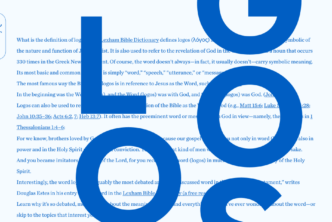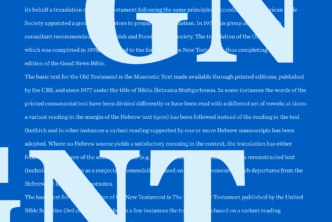In November of 2010, we released the introductory material, text and apparatuses of the highly-acclaimed Göttingen Septuagint.
We’d planned on releasing the fully morphologically analyzed text, but weren’t able to release it at that time. Due to the importance of the apparatus material, we decided it was worth shipping the product without the morphological analysis, and updating later as the analysis became available. As I mentioned in a previous post about the Lexham LXX Interlinear, the Septuagint is big. The material available for Göttingen is more than three times the size of the New Testament.
Since then, we’ve had some breakthroughs and are thrilled to be able to release a provisional edition of the Göttingen Septuagint with morphological analysis. Nearly 99% of the words in the text are analyzed, with morphology and lemma information; the vast majority of those have English gloss information as well. If you’re a Logos 4 user and have already purchased the Göttingen Septuagint, then the updates have likely already downloaded for you.
What do you mean by “Provisional”?
That’s a good question. What we mean by “provisional” is that we’ve done a load of analysis and comparison with our existing Septuagint morphology (used in the Lexham LXX Interlinear and also in the Septuagint with Logos Morphology) and where we could make reliable assumptions about agreements between the two texts, we incorporated the agreeing morphology and lemma information. This is where the “nearly 99%” number comes from. For areas that did not reliably agree, we used other data sets to prepopulate morphology and lemma information; these will be reviewed and corrected over the next months. As individual volumes are reviewed, updates of those volumes will be made available to Logos users who have already purchased Göttingen.
We plan to start the review process in early 2011, but since the coverage was much greater than we’d anticipated, it makes sense to release the provisional edition so that people who already have purchased the Göttingen Septuagint can begin to use the morphology. You know, use features like:
- Morphological Searching
- Lemma-based KeyLinking
- Morphological Visual Filters
- Sympathetic Highlighting
While some portions will be reviewed and corrected during this process, the vast majority of the analysis is reliable as it presently stands. Some of the alternate resources (the “alpha” text of Esther and the alternate text of Habakkuk 3) have no analogue in other LXX editions, so the tagging on these is in a much more provisional state than the rest of the material.
Note for Mac Users: This is a 4.2 only update. Mac users on 4.0b will continue to use the older versions of the resources. Mac users on 4.2 beta will be able to use the resources. If a Mac user is on 4.0b and wants to have the provisional morph edition, then they can install the beta, and the resources should automatically follow.
Enjoy these updates to your Göttingen Septuagint; and thanks for being patient with us while we make these resources even better!





